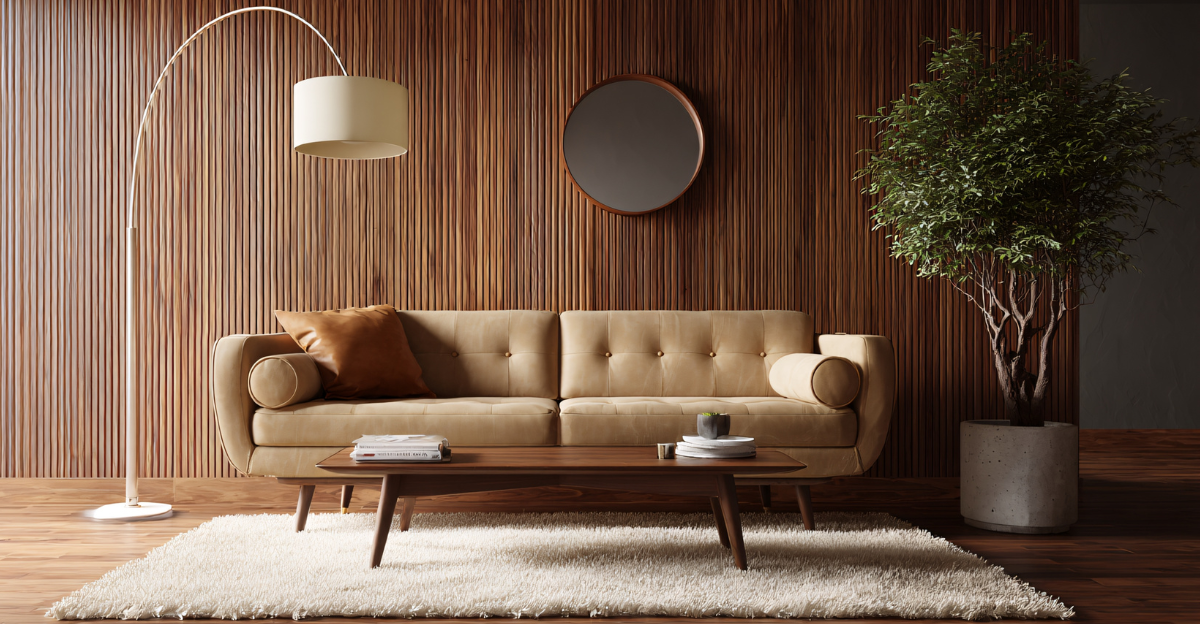Modern minimalism often gets a bad reputation for feeling cold or unwelcoming, but it doesn’t have to be that way. When done right, minimalist spaces can feel warm, inviting, and incredibly comfortable without sacrificing their clean aesthetic. The secret lies in thoughtfully balancing simplicity with elements that make a house truly feel like home.
1. Embrace a Neutral, Warm-Toned Palette
Color sets the mood for any room, and warm neutrals create an atmosphere that feels both sophisticated and welcoming. Instead of stark whites and grays, consider creamy beiges, soft taupes, warm grays with brown undertones, or even gentle terracotta shades. These colors provide the clean backdrop minimalism requires while wrapping your space in comforting warmth.
The beauty of a warm neutral palette is its versatility and timelessness. You can easily switch out accent pieces or seasonal decor without clashing with your base colors. Plus, warm tones naturally make spaces feel more intimate and inviting, encouraging relaxation after a long day.
2. Layer Textures and Materials
Texture is your secret weapon when creating comfort in minimalist spaces. Mixing materials like chunky knit throws, linen cushions, wool rugs, and velvet upholstery adds depth and interest without visual clutter. Each texture engages your senses differently, making the room feel rich and inviting rather than sparse.
Think about how different materials feel against your skin throughout the day. A soft cotton throw draped over a leather sofa creates contrast that’s both visual and tactile. Layering a jute rug beneath a plush sheepskin adds warmth underfoot while maintaining that minimalist aesthetic you’re after.
3. Choose Furniture With Clean Lines but Soft Proportions
Furniture selection makes or breaks the comfort-minimalism balance. Look for pieces with simple silhouettes that don’t feature unnecessary ornamentation, but avoid anything too rigid or angular. Sofas with rounded arms, chairs with gentle curves, and tables with softened edges maintain minimalist principles while feeling approachable.
Proportion matters tremendously here. Oversized, plush seating can still look minimalist if the design is streamlined and the color palette stays cohesive. A generous sectional in a solid neutral fabric provides serious comfort without overwhelming your space visually, proving that minimalism doesn’t mean sacrificing coziness.
4. Use Lighting Strategically
Lighting transforms a room’s entire personality, especially in minimalist spaces where every element counts. Install dimmable fixtures that let you adjust brightness according to time of day and mood. Layer different light sources at various heights—overhead pendants, floor lamps, table lamps, and even candles—to create depth and warmth.
Harsh overhead lighting can make even the coziest room feel sterile and unwelcoming. Soft, diffused light sources placed thoughtfully around the room create pockets of warmth and intimacy. Consider warm-toned bulbs rather than cool white ones to enhance that comfortable, lived-in feeling you’re cultivating.
5. Introduce Natural Elements
Bringing nature indoors instantly softens minimalist spaces and connects us to the outdoors. Wood furniture with visible grain, stone accent pieces, and living plants add organic beauty that feels both calming and grounding. These elements introduce subtle variations in color and texture that prevent rooms from feeling too sterile.
Plants deserve special mention as they literally breathe life into your space. A fiddle-leaf fig in a corner, succulents on a windowsill, or trailing pothos on a shelf add movement and vitality. Natural materials age beautifully too, developing character over time rather than simply wearing out like synthetic alternatives.
6. Limit Clutter With Smart Storage
Comfort doesn’t mean leaving everything out on display. Smart storage solutions keep your space serene while ensuring everything you need stays accessible. Built-in cabinets, ottomans with hidden compartments, and beds with integrated drawers provide homes for belongings without adding visual noise to your carefully curated space.
The goal is making storage feel invisible or intentional rather than like an afterthought. Floating shelves with minimal brackets, sleek media consoles with closed compartments, and furniture pieces that serve dual purposes help maintain that clean minimalist look. When everything has its place, relaxation comes naturally because your environment feels organized and peaceful.
7. Add Intentional, Meaningful Accents
Minimalism doesn’t mean emptiness—it means intentionality. Choose accent pieces that genuinely resonate with you rather than filling space for decoration’s sake. A single piece of meaningful artwork, a handmade ceramic bowl, or textiles from your travels add personality and warmth without creating clutter.
Quality trumps quantity every single time in minimalist design. One beautiful woven wall hanging makes more impact than five forgettable prints. A treasured sculpture or family heirloom displayed prominently becomes a conversation piece and focal point. When each accent tells a story or brings you joy, your space feels deeply personal and genuinely comfortable.







